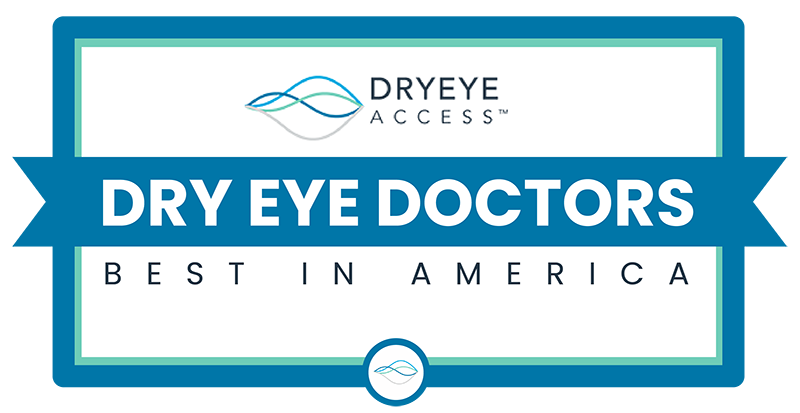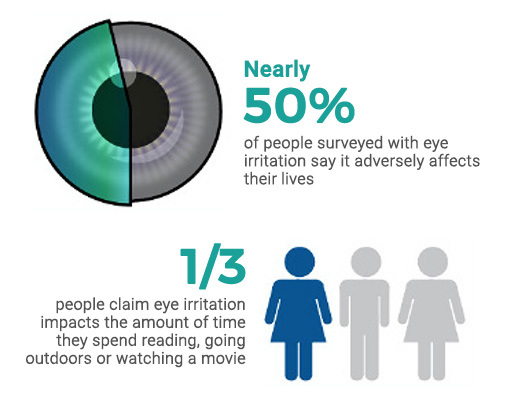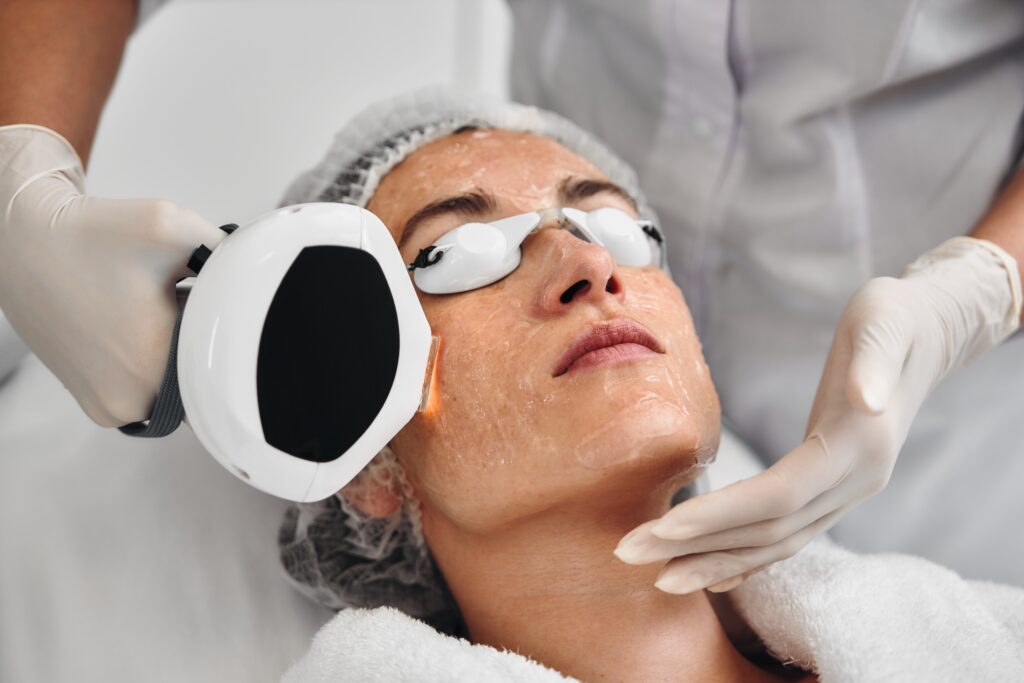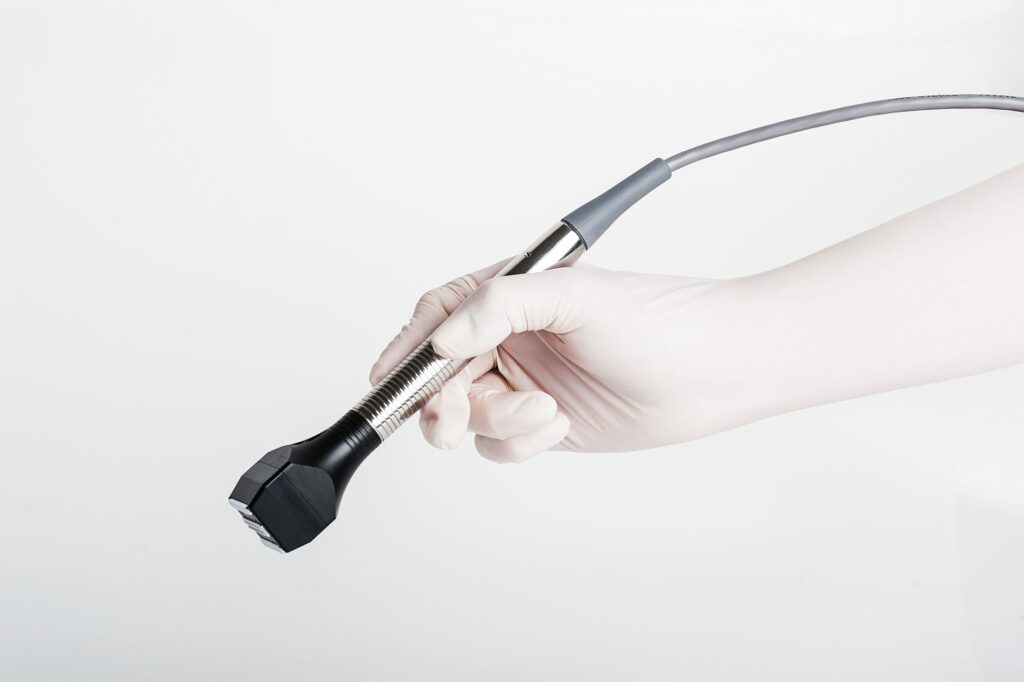


Dry Eye is a common condition related to the tear system of the surface of the eye. It is usually a chronic, progressive problem and afflicts millions of people of all ages. If not managed properly, eye dryness can progress and permanently impact eye health, eye comfort, and ability to see clearly.
Our dry eye specialists use a unique top down approach in personally assessing every patient to identify all of the potential causes of your ocular irritation. She listens to your symptoms, takes an extensive medical history and examines your eyes with her microscope.
She then uses state-of-the-art technology to gather additional data points enabling her to accurately diagnose dry eye, environmental allergies (which affect your eyes), problems you may have with the glands in your eyelids known as meibomian glands, contact lens related issues, and much more.
After carefully and precisely diagnosing your condition, our dry eye specialists discuss the treatment options which would be the most effective and make the most sense for you.

Dry Eye occurs when the eyes do not produce enough tears, the tears are not of good quality, and/or the tears evaporate too quickly.
The tear film has three layers that cover, protect, and moisturize the eye:
There are many causes of dry eye. Patients who experience symptoms of dry eye should have a thorough eye examination and evaluation by a specialist. Treatments vary considerably depending on the underlying cause of the problem.
A major cause of dry eye is instability and rapid evaporation of the tear film, which can be triggered by:
Another cause is when the eyes do not produce enough tears. Common reasons for decreased tear production include:
Your doctor may perform special tests when evaluating dry eye symptoms. These involve measuring the volume and quality of tears, and/or scans to determine the health of the meibomian glands (oil glands) of the tear film.
Caution: It is advisable to seek a full evaluation with a dry eye specialist before beginning treatments. Below are listed some of the treatments which may be appropriate for you based on your full evaluation. Effective treatment of Dry Eye depends on the identification of the underlying cause(s), and can only be determined after a full evaluation.
Sometimes your doctor may recommend prescription eye drops to be used in combination with, or instead of, artificial tears.
Restasis and Xiidra: contain ingredients that decrease inflammation resulting from dryness, and may help the eye produce more natural tears. They may take a few months of daily use to be effective. Some patients experience a burning sensation when beginning use. There may be other side effects; discuss it with your doctor.
Steroid eye drops: sometimes used in conjunction with artificial tears or other eyedrops. They can reduce inflammation faster than drugs like Restasis, but are not safe for long-term use. Short-term use is generally very safe, but complications such as increased eye pressure or cataracts can develop from extended use of steroid drops.
There are a variety of tiny punctal plugs that are used to plug the tear drains and retain tear film in the eye.
LipiFlow is an FDA-approved medical device used to treat blockage of the meibomian glands. It combines heat and pressure to stimulate the release of the oily layer of the tear film.
Permanent closure of the tear ducts with thermal puncture cautery may be recommended for very severe cases of dry eye.
Curious if you have dry eye disorder, or what treatments may help your eye comfort, eye health, and vision?
Please call or email to arrange a consultation at Eye Physicians of Long Beach Dry Eye Center of Excellence!!
Intense Pulsed Light (IPL) is an innovative treatment originally designed for various skin-related issues that has been adapted to help treat dry eye. During IPL treatment, your eye doctor will use a device that emits carefully calibrated light pulses to address dry eye syndrome.
These pulses are brief, intense bursts of light that span a broad spectrum of wavelengths, allowing for targeted treatment of the underlying causes of dry eye, specifically meibomian gland dysfunction, or MGD. MGD is a common condition where the oil-producing glands in the eyelids become clogged or don’t function properly.
This leads to an inadequate oil layer in the tear film, causing tears to evaporate too quickly and resulting in dry eye symptoms. IPL treatment can be particularly effective in addressing this issue.

During an IPL treatment, your eye care professional applies controlled pulses of light to the skin around your eyes. This process offers several benefits:
Typically, a series of IPL treatments is recommended for the best results. Many patients
report significant improvement in their dry eye symptoms after three to four sessions.
Forma-I is an innovative treatment for dry eye syndrome that, like IPL, targets the meibomian glands. However, Forma-I uses radiofrequency energy instead of light pulses to improve gland function.

The treatment works by applying controlled heat directly to the eyelids, where the meibomian glands are located. This warmth helps liquefy the oils in the glands, promoting better flow and improving the quality of the tear film.
The precision of the radiofrequency technology allows for targeted treatment of the small, delicate areas around the eyes. By focusing on improving meibomian gland function, Forma-I can address one of the root causes of dry eye symptoms rather than just treating the surface-level effects.
The radiofrequency energy not only helps to melt and release hardened oils from the glands but may also stimulate local blood circulation and collagen production in the eyelid tissue.
Treatments are typically quick, lasting only a few minutes. Many patients report experiencing noticeable improvements shortly after their first treatment, though a series of treatments is often recommended for optimal results.
Determining whether IPL or Forma-I is suitable for your dry eye condition depends on several factors, including:
It’s important to consult with a dry eye specialist to determine the most appropriate treatment plan for your specific situation. At Eye Physicians of Long Beach Dry Eye Center of Excellence, our dry eye specialists use advanced diagnostic tools to assess your tear film and meibomian gland health, allowing them to tailor their treatment recommendations to your unique needs.
Their goal is to provide you with the most effective relief from your dry eye symptoms, whether that involves IPL, Forma-I, or a combination of treatments. If you’re experiencing persistent dry eye symptoms and are interested in learning more about these innovative treatments, schedule a consultation at Eye Physicians of Long Beach in Long Beach, CA, today!